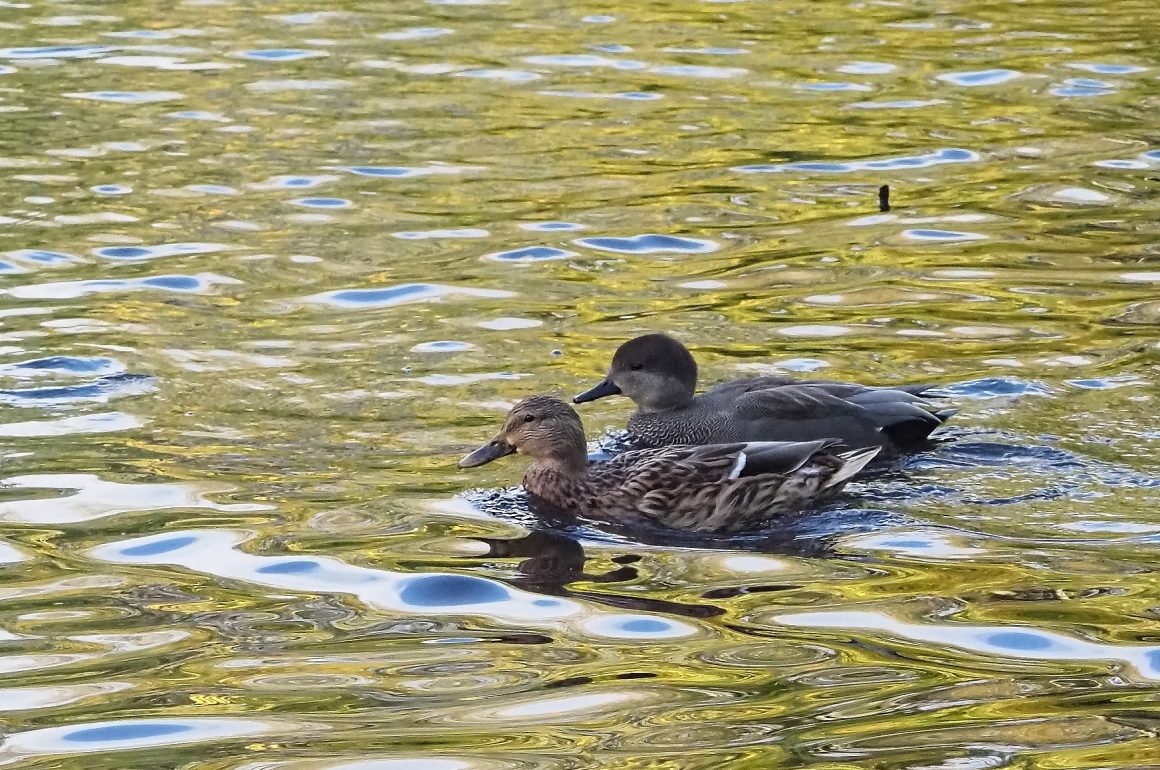
As I promised in my last post, my wife and I were in Dublin, Ireland, when that post went online. Every year we spend several weeks working in the extreme south of Spain, and every year we try to spend a few days someplace new in Europe, on our way there. This allows us to start adjusting to the 7-8 hour time difference before we start our work activities. This year it was Dublin’s turn.
Ireland is one of those places that I feel should really be experienced in the countryside, not in the city. But four days is not much time to do so, and jet lag didn’t help either. So any birding I could manage had to happen in the general downtown area in which we stayed. A quick glance at the city’s eBird hotspots suggested that my best option would be St. Stephen’s Park, as this medium-sized urban park was only a 25 minute walk from our hotel, and unlike other urban parks, it sports a small lake.
I tried to head out at the crack of dawn, which in Dublin in October, is around 7 a.m. Unfortunately, I had forgotten that without an Irish SIM card on my mobile phone (I waited until Spain to buy one of those), I could only download Merlin’s British Isles pack wherever I could plug into someone’s internet. That delayed my departure from the hotel for a few minutes. Then I arrived at the park, and realized that I had the same problem with my eBird app.
So off I went again, searching for another business that would let me use their internet. Would you believe that Irish Starbucks don’t open until 8 a.m.?
Long story short, my outing to the park didn’t really get going until about 8:15. But I had polished off a continental breakfast.
It did not take long to determine which species dominate the St. Stephen’s ecosystem. Herring Gulls were everywhere, especially flying overhead. Lots of Hooded Crows kept them company, but curiously, there were no other corvid species present (like Jackdaws or Rooks, common in other European parks). Many European Magpies could be seen on the ground and in the trees, which was a pleasure. I’m a big fan. Many, many Rock Pigeons wheeled around, as well as a somewhat smaller quantity of Common Wood-Pigeons.
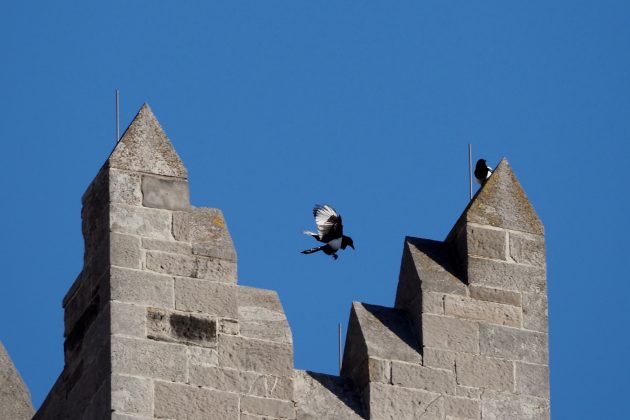
These Magpies were seen flying around ramparts near the park.
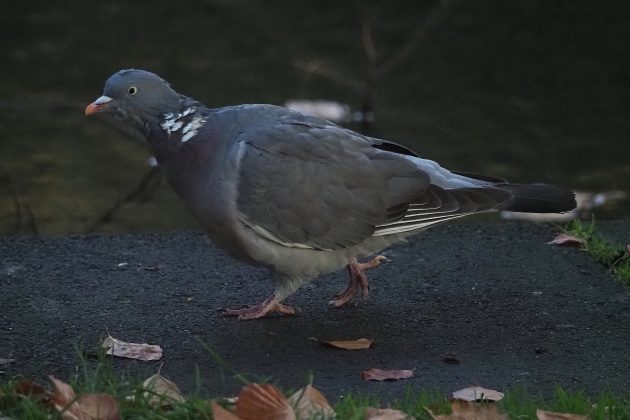
Wood-Pigeons look much like Rock Pigeons, but have made the smart PR move of not wearing out their welcome worldwide.
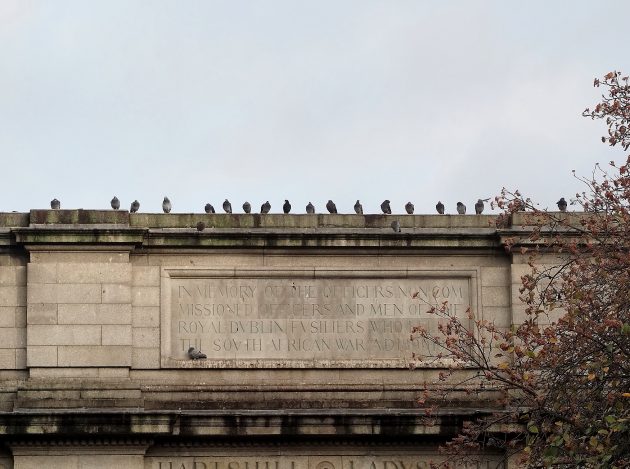
Rock Pigeons, wearing out their welcome.
The lake had quite a population of Mallards, amazingly tame Mute Swans, and Tufted Ducks. Seeing the latter was a treat for me.
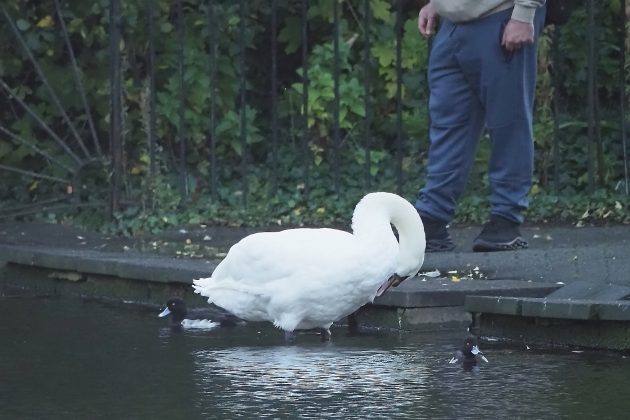
Very tame
A male Gadwall eventually turned up. He apparently should not be found in Dublin, but has long been in residence in the park, and is quite the celebrity among local birders. He clearly has a close relationship with a certain female Mallard. Who am I to judge?
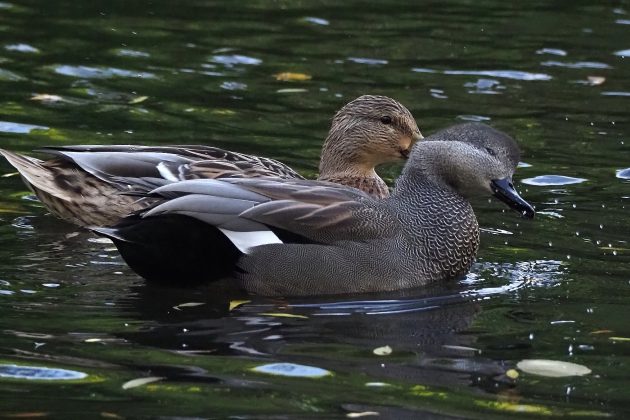
There were also several Common Moorhens, including one adult accompanying an unexpected October juvenile. And one Great Cormorant flew down to the lakeside, to strike a dramatic pose. A single Grey Heron did the same.
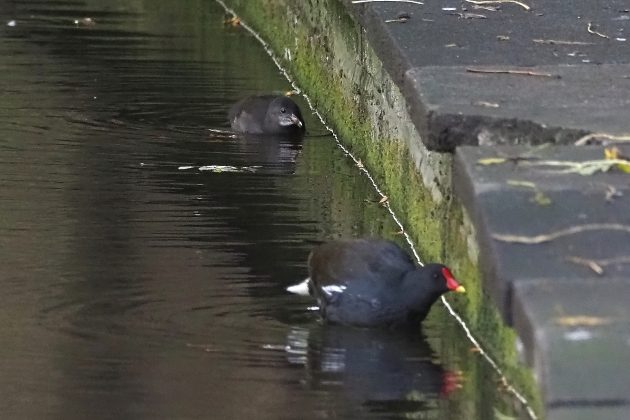
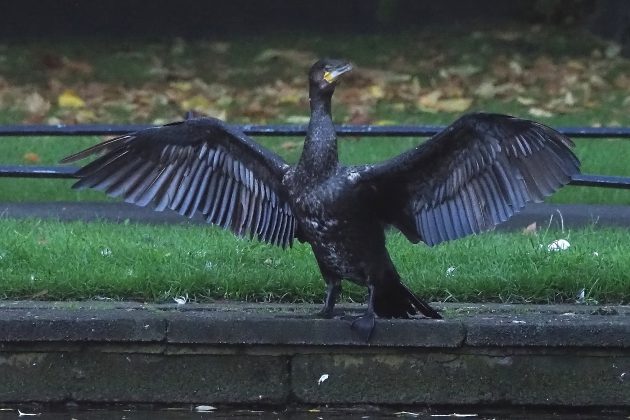

In the trees, one could hear Eurasian Wrens, European Robins, and Great Tits. I eventually managed to see all but the latter.
Later in the day, while walking along Dublin’s Liffey River, I looked overhead and clearly saw a raptor wheeling among the many Herring Gulls. Unfortunately, my knowledge of European birds of prey is still questionable, and when I downloaded the Merlin for Ireland earlier in the day, it failed to turn up with photos. So I quickly marked it as a Black Kite, mostly as a placeholder until I could correct my ID when we got back to our hotel. Within minutes, I had an email from the local eBird reviewer informing me that Black Kites are extremely rare, and that the only raptor likely to be seen in the Dublin area is the Common Buzzard. Which of course, once I could compare my not-terrible photo with my rebooted Merlin, it was.
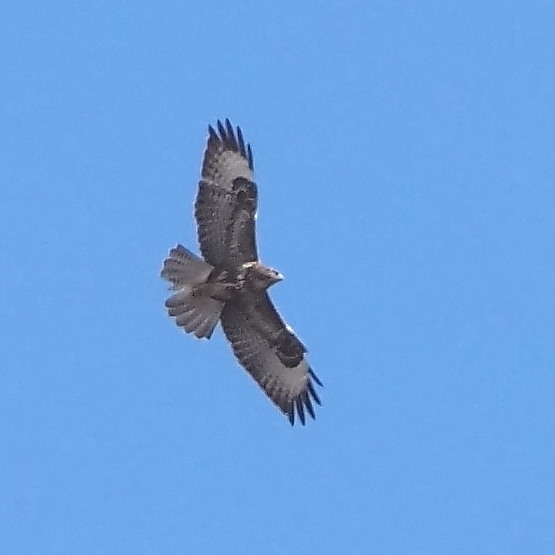
This was not a bad thing, as I ended up having a very nice back-and-forth with the eBird reviewer. He’s the one that informed me of the Gadwall’s celebrity status. He told me he was happy that I had gotten to see it. (Gadwalls are quite common near Morelia in the winter, but I felt special, anyway.) He also said that while Common Buzzards are the mostly likely bird of prey in Ireland, it was still unusual to see one right over the heart of Dublin. I felt even more special.
My birding day ended with a very close encounter with one or more European Starlings. In North America, I might have felt irritated to see this wildly invasive bird. But in Europe, where they belong, its always a pleasure to see what handsome creatures they are.
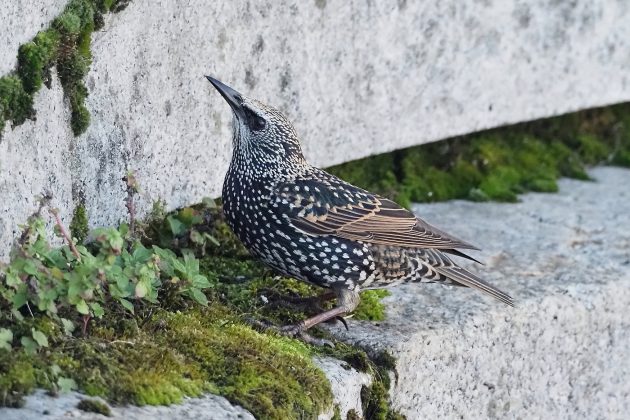






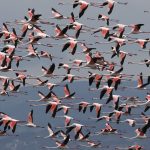






The joys of city park birding!